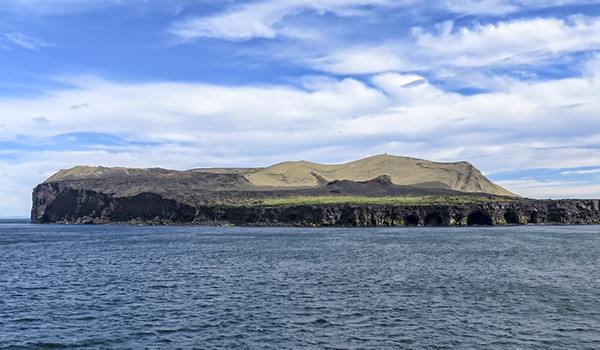
by The American Geosciences Institute Monday, November 28, 2016

Click to enlarge photo.
Named for the Norse god of fire, this island began as a submarine volcanic eruption, which emerged above the ocean surface in 1963 and continued until 1967, the longest eruption in the host country’s history. When it ended, the volcano rose 300 meters above the seafloor and 170 meters above the ocean surface.
This spectacular island-building eruption commanded the attention of volcanologists all over the world, and the style of volcanism is now named for the island.
Today, the island continues to be studied to observe how living organisms colonize new land surfaces and how island ecosystems develop. Only scientists are allowed onshore.
Scroll down for the answer
Answer: The island of Surtsey was formed by the longest known eruption in Iceland’s history, lasting from 1963 to 1967. When it ended, the volcano rose 170 meters above the ocean surface, and 300 meters from the seafloor. Today, only scientists are allowed onshore, as the island continues to be studied to observe how living organisms colonize new land surfaces and how island ecosystems develop. Photo by Grace Sherwood Winer.
December Winners: James Acker (Elkridge, Md.) Paul C. Agnew (Morrisonville, N.Y.) Jennifer Cugnet (Weyburn, Saskatchewan, Canada) Rodney A. Sheets (Columbus, Ohio) Frances Timms (Fareham, Hampshire, England) Visit the Where on Earth? archive.
EARTH also welcomes your photos to consider for the contest. Learn more about submitting photos here.
© 2008-2021. All rights reserved. Any copying, redistribution or retransmission of any of the contents of this service without the expressed written permission of the American Geosciences Institute is expressly prohibited. Click here for all copyright requests.